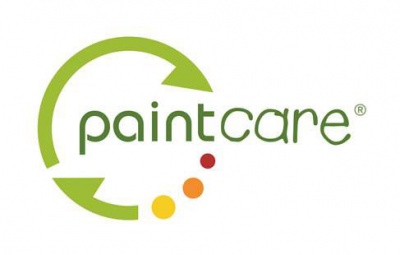Call to boost paint recycling
 The paint industry is calling on household waste recycling centres (HWRCs) to accept leftover household paint as part of a drive to increase the redistribution of unused paint.
The paint industry is calling on household waste recycling centres (HWRCs) to accept leftover household paint as part of a drive to increase the redistribution of unused paint.
Launched at the House of Commons yesterday (18 November) with Resources Minister Rory Stewart present, PaintCare’s ‘Creating a circular economy for leftover decorative paint in the UK’ report set out a number of recommendations for how government and stakeholders can help remove obstacles preventing the use of this underutilised waste stream.
PaintCare, run by the British Coatings Foundation (BCF), is an industry-led initiative that aims to increase the amount of leftover decorative paint being redistributed for use or remanufactured.
The programme estimates that around 50 million litres of waste decorative paint is generated in the UK every year, the majority of which enters the domestic waste stream before being sent to landfill or disposed of as hazardous waste, at great cost to local authorities (LAs).
In addition to this supply of unused paint, the initiative states that only a third of HWRCs currently accept liquid paint. According to the BCF, only two per cent of the total amount of leftover decorative paint gets redistributed for use or remanufactured.
Redistribution projects see usable leftover paint given to community projects, while remanufacturing involves unwanted paints being blended and filtered to create new products.
The report calls on all HWRCs to agree to accept liquid paint to prevent leftover paint from entering the general waste stream.
It also recommends that all stakeholders involved in facilitating a national circular economy for leftover paint sign up to the PaintCare voluntary commitment. Greater numbers of signatories would better facilitate a planned major national education campaign that will help raise awareness of paint recycling to the public, according to the initiative.
Current signatories to the PaintCare commitment include corporations such as AkzoNobel, Dulux, Crown Paints and Ronseal. The programme is also supported by the Environmental Services Association, Veolia and the Local Authority Recycling Advisory Committee (LARAC).
Signatories have already developed redistribution and remanufacturing programmes, including AkzoNobel’s Community Repaint scheme, which redistributes almost 500,000 litres of paint to community projects in 75 locations each year. Veolia has also recently opened a paint remanufacturing facility at its Stewartby site in Bedfordshire.
Report recommendations

- redistributed, recycled or remanufactured paint sold by social enterprises, charities or community based groups should be exempt from VAT and such organisations should be exempt from business rates;
- government should specify that five per cent of government painting contracts use paint products with a significant percentage of remanufactured content, helping to create part of the market for 10 million litres of remanufactured paint that could be produced;
- government should ensure that regulations required to transport and use leftover paint do not create burdens on establishing remanufacturing operations;
- government should work with the paint industry to identify alternative funding mechanisms to help pay for the remanufacturing costs if an economic model cannot be established;
- local authorities and the waste industry should promote consistent, agreed upon guidelines to consumers for the disposal of leftover paint; and
- government should enable the use of landfill taxes to support social enterprises, charities or community based groups committed to establishing paint redistribution and recovery to grow from 0.5 million litres to 3 million litres by 2020.
The report also suggests that paint manufacturers develop tools that will advise customers on the amount of paint required for jobs and promote consistent guidelines on the disposal of leftover paint. It also calls for quality protocol for the remanufacturing of leftover paint to ensure consistent quality and consumer confidence in the recycled product.
PaintCare states that LAs’ main concerns about providing facilities for paint recycling are mainly to do with cost (as liquid paint is generally disposed of as a hazardous waste), the reliability of end markets and the lack of awareness of recycling alternatives. If all recommendations included in the report are taken on board, it says, costs to LAs would fall as a market for paint recycling and remanufacture is established.
New supply streams for valuable recovered raw materials
Writing in the report’s executive summary, Peter Jones, Chair of the British Coatings Federation Leftover Paint Steering Group, said: “BCF’s PaintCare project working groups have established that there is an alternative solution, which can both solve the landfill problem, and also reduce costs to local authorities. Sorting paint for remanufacturing, instead of disposing of it as hazardous waste, will allow manufacturers, existing and new, to build new supply streams for potentially valuable recovered raw materials and develop markets for recycled paints. A process to collect waste paint is absolutely vital in developing such markets and local authorities are uniquely placed to make this happen.
“Paint manufacturers of all sizes have demonstrated willingness to invest in such solutions, with several million pounds already invested in either commercial ventures or supporting social enterprises, but there needs to be a partnership between industry, local and central government and the social sector to make paint remanufacturing happen on a national scale.
“However, as has been established in several failed paint remanufacturing operations, the key to success is developing a market for leftover paint, and this report calls for government to act… It will also be important to establish the knowhow to use the waste paint not suitable for remanufacturing as a raw material for other products such as concrete, as opposed to incineration as hazardous waste, if the 40 per cent cost savings foreseen are to be delivered.
“The next 12 months will be spent working closely with all involved to try to remove some of the remaining obstacles to creating a new remanufacturing sector which also solves a major household waste issue and at lower cost to all stakeholders.”
The full ‘Creating a circular economy for leftover decorative paint in the UK’ report can be found on the PaintCare website.






